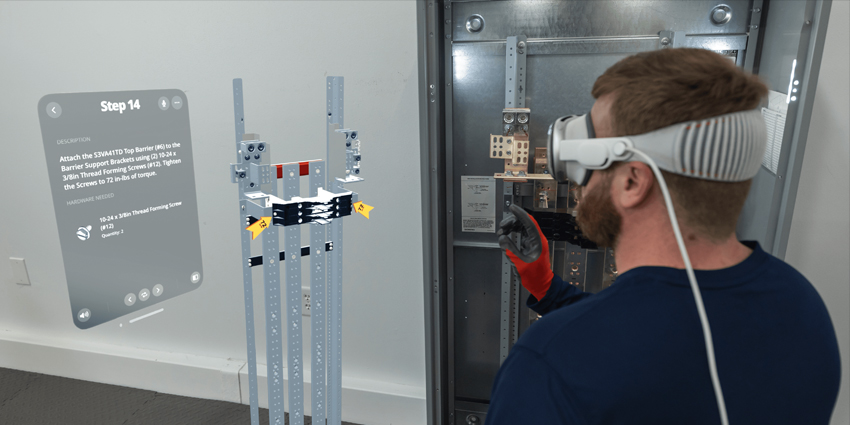Reality as we know it has changed drastically in the last few years. An accelerated state of digital transformation is altering everything from the way we shop, to the way we work. One of the most significant technologies powering this disruption, is the XR landscape. Currently, Extended Reality is growing at a CAGR of 30.6%, towards an explosive value of $125.2 billion by 2030.
While virtually every industry is discovering new uses for XR in the realms of education, collaboration, and even wellbeing, the gaming landscape still remains one of the most valuable ecosystems for immersive technologies. For gaming companies, XR represents an entirely new platform through which to connect with players.
In a world where people are actively searching for more ways to connect with communities and unlock entertainment online, XR could be the perfect next step for your gaming brand. The question is, how do you build a business case for this new venture?
Step 1: Consider Your Avenue for XR
Notably, the XR landscape has a number of different segments to it. For many companies in the gaming industry, the easiest and most affordable entry point has been the AR space. AR games can perform well on mobile apps, ensuring customers don’t need to purchase additional hardware to get involved. This can improve your access to a wider audience.
At the same time, there are a number of development platforms out there specifically designed to assist companies in their AR strategies. ARKit and ARCore offer quick and simple ways to bring immersive technology into the smartphone landscape. However, the accessibility of the AR space also means there’s a lot of competition to consider.
This may be the reason why we’re seeing more gaming brands and developers getting involved with VR and MR instead. VR is becoming more affordable for a wide range of gaming customers, thanks to tools like the Oculus Quest, which sold 15 million units during just 20 months on the market. As VR becomes more appealing in the age of the Metaverse, exploring virtual realities could be an ideal way for gaming companies to separate themselves from the competition.
While Mixed Reality has yet to fully take off in the gaming landscape, it also represents a powerful environment, perfect for games arcades and hybrid environments looking to offer their customers a more immersive real-world experience.
Step 2: Explore Development Opportunities
At a glance, one of the biggest benefits of XR for the gaming company is its ability to unlock new revenue opportunities and sales strategies. However, it’s worth noting there are underlying benefits to this technology too. Like most companies in the rapidly transforming world, gaming brands can perform better when team members are empowered to work efficiently together.
XR solutions within the business landscape can support the more rapid and efficient development of new gaming experiences. Collaborative apps and VR environments can bring teams together to discuss new ideas, build new worlds, and experiment with technology in a safe and cost-effective environment. There are even opportunities to enhance the way companies work with external contributors and actors in the gaming world.
Many major games rely on the input of voice actors and graphic designers working in other parts of the world. With XR solutions, it’s possible to bring team members into the storyline of a game, and provide them with a more powerful working experience. Gaming companies and developers can even immerse voice actors in the world they’re talking about.
When it comes to displaying new ideas and concepts to shareholders and investors, XR also offers an opportunity. An immersive environment could lead to a much more valuable level of buy-in from professionals looking to get involved with the initial launch of a new environment.
Step 3: Prepare for the Metaverse
It’s no secret that the Metaverse is rapidly taking the gaming landscape by storm. Even at a time when companies are still attempting to define what the “Metaverse” will truly mean to the future of gaming, we’re seeing a host of leading brands investing in new concepts within the embodied internet. Microsoft and Meta have already revealed their intentions to build Metaverse gaming environments and communities in the years ahead.
We’ve even seen some examples of what Metaverse spaces might look like in the Metaverse, with the development of various worlds like Roblox and Fortnite, designed to bring people together through digital avatars and immersive group experiences. As interest in the Metaverse continues to grow, gaming companies have an excellent opportunity to start carving a space for themselves in a new landscape.
When presenting your business case for XR to shareholders and business leaders, it’s worth drawing attention to the potential impact of the Metaverse on the way people play and interact in the future. Many experts believe that the Metaverse will define the future of gaming, giving us new player experiences, from “play-to-earn” economies, to NFT marketplaces.
Getting ahead of the curve now could ensure you have what it takes to outshine your competitors when the Metaverse takes hold.
Step 4: Strengthen User Relationships
Like all companies, gaming brands are reliant on strong relationships with their communities and customers to thrive. However, to build these relationships, the best brands need more than just the most impressive storyline or graphics. The best games are effective because they deliver a powerful and intuitive user experience from start to finish.
The XR environment allows companies in the gaming landscape to respond to the growing trends for more immersive and natural user experiences. With motion sensors and tracking tools, it’s possible for gamers to interact with an environment like never before. Even implementing things like voice control into XR games can make the title feel a lot more fun.
By investing in the XR space now, gaming companies can also ensure they’re on the cutting edge of the industry as new technologies emerge. For instance, as 5G evolves and expands around the world, we’re likely to see more people using AR technology because of a reduced risk for latency. The same is true for MR solutions.
Showing a commitment to give your users and customers the best possible experiences today could improve your chances of loyalty in the years to come.
Step 5: Consider New Revenue Streams
Finally, it’s worth highlighting the potential for new revenue opportunities when building a business case for XR solutions. Embracing XR allows gaming companies to target new user groups and communities with their creations in a host of different ways.
For instance, arcades and companies offering in-person gaming events will be able to leverage haptic feedback and mixed reality to create state-of-the-art interactions for their clients. Already, we’re seeing companies around the world opening the doors to dedicated XR environments, where people can experiment with the latest tools, and enjoy XR escape rooms.
There’s even the possibility to branch into the B2B environment, with gamified training experiences and team-building events. As today’s companies look for more ways to engage and empower their teams, fun and fast-paced games which offer a level of educational support will become increasingly valuable.
Consider whether your gaming company could earn more revenue by simply investing in more immersive experiences.







